The blue marlin is one of the Museum's largest ever specimens preserved whole in fluid - and an innovative technique will make this enormous fish last.
When a blue marlin stranded on a beach in Pembrokeshire in September 2016, it was only the second ever occurrence in UK waters.
The four-metre-long billfish was of significant interest to scientists at the Museum, who collected and froze it for permanent preservation.
Something old, something new
The Museum's spirit collection houses millions of specimens in glass jars and tanks - including hundreds of thousands of fishes.
They have been fixed with either ethanol or formalin and are stored in ethanol.
Formalin is a clear liquid made by dissolving formaldehyde gas in water. It creates links between proteins in an animal's tissue, which stops the flesh from decomposing - Museum scientists use it in the process known as fixation.
However, rather than transferring the blue marlin to ethanol for permanent preservation, scientists chose a new method for the fish.
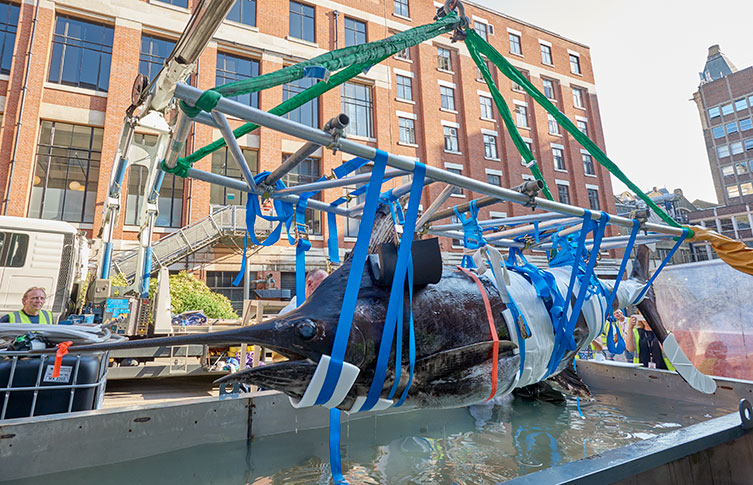
The blue marlin spent three weeks in a large tank of formalin and glycerol to stop it from decomposing
Dr Ralf Britz, a fish researcher at the Museum, explains, 'Because it was intended to go into a public space we wouldn't have been able to use 10,000 litres of either of these two substances.'
Ethanol is flammable and therefore unsuitable for large quantities to be on public display, and formalin gives off hazardous fumes.
Instead, the team tried storing the fish in a compound called glycerol, which poses no threat to visitors.
'But a fish the size of the marlin had to be fixed in a formalin solution first,' explains Ralf.
'People started using formaldehyde rather than ethanol as a fixative around 1900, and it is still the fluid of choice whenever you want to preserve anything big today.'
The initial transportation and fixation of the marlin caused it to lose some of its natural shape. However, one of the perceived benefits of glycerol is that once the fish has soaked up the solution it should expand again.
'It's possible the dents will pop out again, and it will go back to its natural torpedo shape,' says Ralf,
'There is also the chance that glycerol will help the colours that are left in the skin to increase in intensity'.
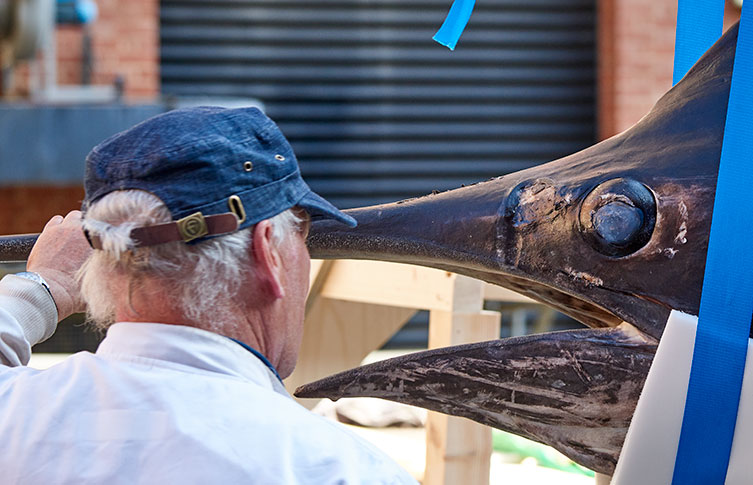
The four-metre-long billfish is one of the largest specimens the Museum has ever preserved whole in liquid
A three-week soak
The marlin had been frozen in the Museum's collection since September 2016.
When the time came for it to go on display, it needed a thorough thawing.
After spending a day and a half defrosting in a tank of water, the process of fixing and preserving the marlin began.
It started in the same way as for any other liquid-preserved specimen, but this time using a formalin solution containing 10% glycerol.
The fish was placed into a large tank of the solution. But a formalin bath would only have penetrated three to four centimetres of the superficial layers of the fish.
So, armed with long needles, the scientists helped ease the solution into the middle of the body.
Ralf says, 'We had to inject formalin into the muscles and internal cavities systematically so every bit was covered before it began to decompose.'
The team kept the fish in its formalin-filled tank for three weeks to make sure it was fully fixed.
Safely secured
The next step was to steadily increase the amount of glycerol in the tank's solution from 10% to 30%, which will gradually penetrate into the body of the fish.
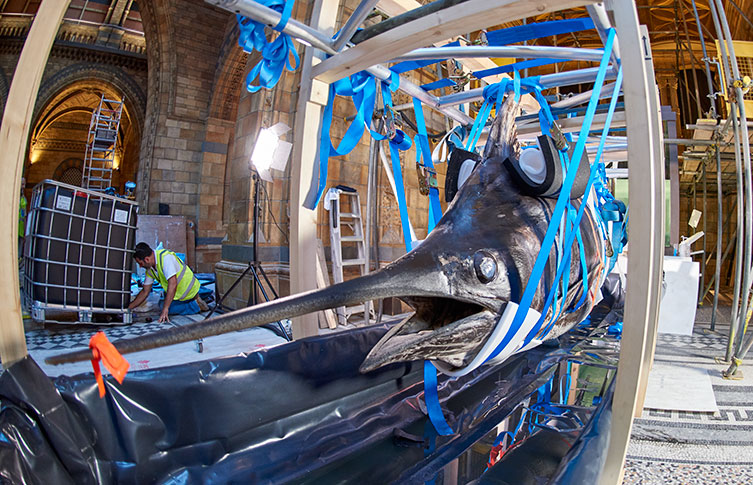
After weeks of preserving, the blue marlin was carefully transferred to its new display tank
The blue marlin would naturally float in glycerol, but with this new technique its body will slowly absorb the solution around it.
Once the concentration reaches 65% glycerol, the specimen will reach equilibrium in the tank and will rest suspended behind the glass.
In the meantime, the marlin is being held down with stainless steel tethers, which will remain permanently to keep the fish from moving at all within the tank.
The lost fish
The blue marlin is one of the heaviest fishes in the ocean.
'I don't exactly know what the record is, but certainly more than 600kg. And the bigger they get the chunkier they get,' says Ralf.
The species is hunted worldwide for its recreational and commercial value. It is currently under threat of being overfished, labelled 'vulnerable' on the IUCN Red List of Threatened species.
Blue marlins are mostly found in the tropical and subtropical parts of the Atlantic Ocean, so for one to wash up on a Pembrokeshire beach was an extremely rare event.
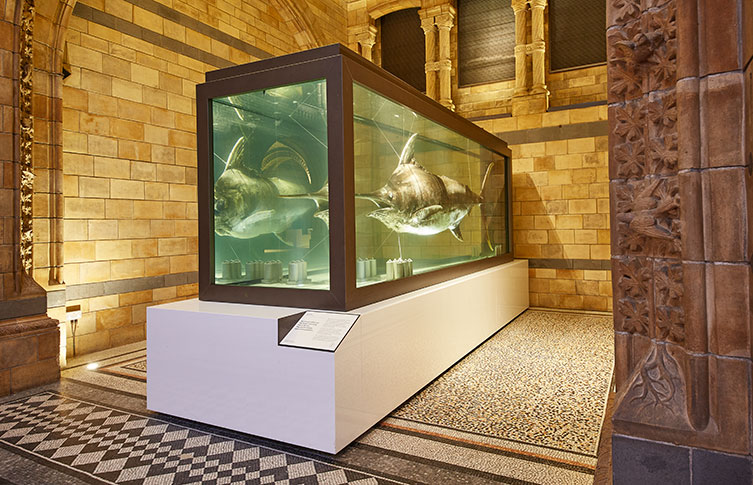
Visitors can view the blue marlin in the newly redeveloped Hintze Hall
Ralf says, 'Marlins seem to be following the Gulf Stream, a warm water system coming from the United States, across the Atlantic to Europe and the British Isles.
'Marlins and swordfish seem to strand in the same area of Wales. I don't think this has anything to do with climate change or global warming - they are just individuals that have lost their way.'
Since 1913 the Museum has played an active part in collecting information about stranded cetaceans in the UK, and is now a partner in the UK Cetacean Strandings Investigation Programme.
The public can help the study of marine animals in the UK by reporting stranded whales, dolphins, porpoises, seals, basking sharks or marine turtles they come across. Find out how.
Get up close
The glycerol-preserved blue marlin is now on view in the newly redeveloped Hintze Hall.
With the marlin suspended in a specially designed display case, plan your visit to get up close to this enormous fish.
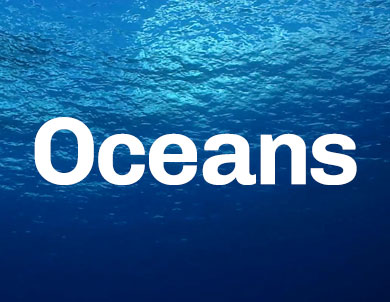
Dive in
Find out more about why we need to protect the oceans.

UK Whale and Dolphin Strandings
Report stranded whales, dolphins and porpoises to support UK marine mammal research.

See the blue whale
Visit the Museum to walk beneath the largest animal ever to have lived.



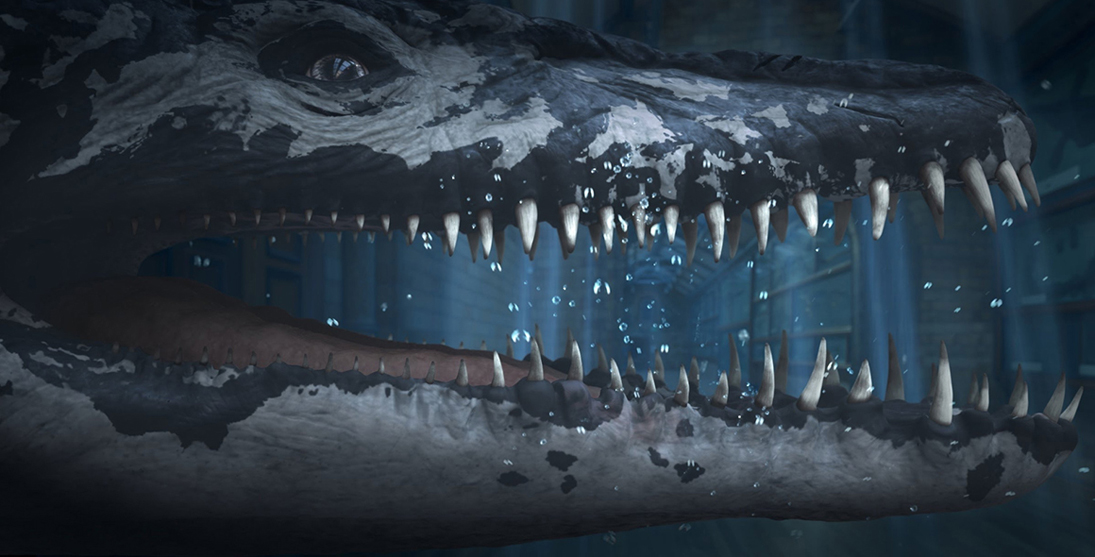
Don't miss a thing
Receive email updates about our news, science, exhibitions, events, products, services and fundraising activities. We may occasionally include third-party content from our corporate partners and other museums. We will not share your personal details with these third parties. You must be over the age of 13. Privacy notice.
Follow us on social media